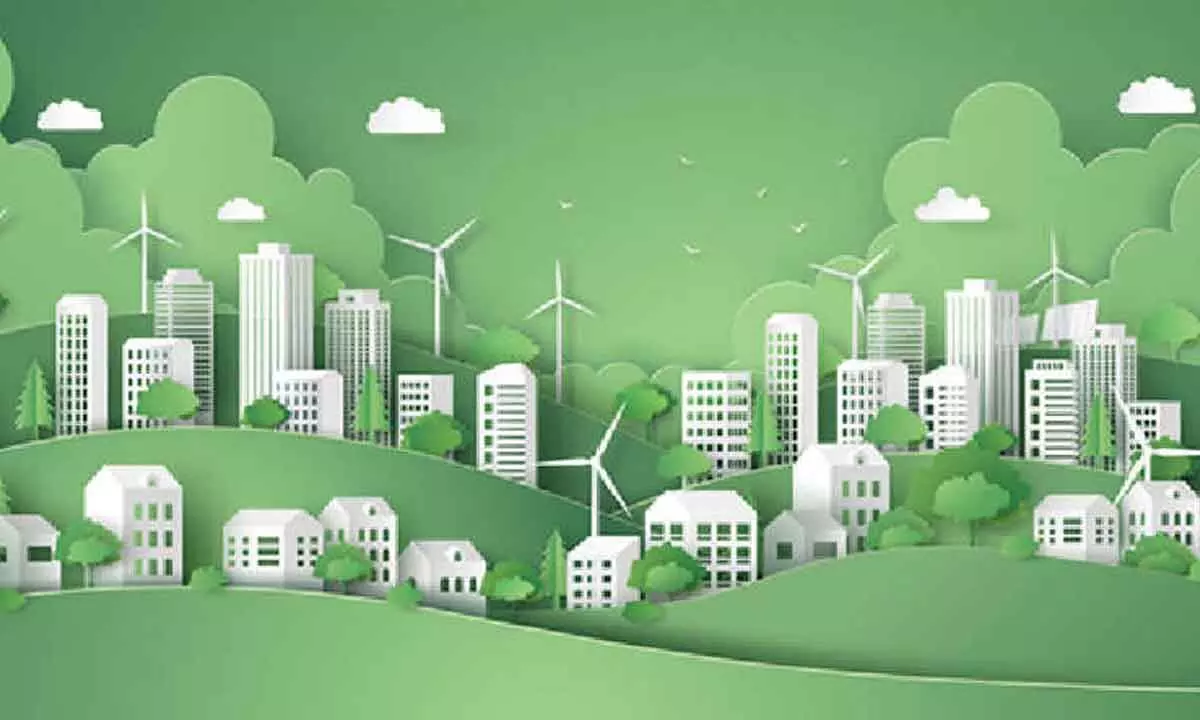Sustainable urban development is a strategy for cities to grow in a way that is economically viable, socially just and environmentally friendly and meets current needs without affecting the ability of future generations to meet their own needs. This includes the integration of people, activities, buildings and public spaces into a network, the promotion of walk -in communities with strong public transit and the creation of an equilibrium between natural ecosystems and urban areas to prevent the deterioration of the environment and the formation of urban heat islands. The most important goals include reducing climate change, improving quality of life, efficient resource management, social inclusion and resilience for cities.
Cities make up more than 70 percent of global energy-related CO2 emissions and an estimated 50 percent of global waste and accommodate almost half of the world's population. In view of an increasing proportion of the world population, which has lived in urban areas in the coming decades, the effects of cities on the environment – and their susceptibility to more and more extreme weather – will continue to grow unless significant measures are being increased.
Cities also offer concrete solutions to combat climate change and to minimize larger effects on the environment. The cities show a strong leadership in many areas and rely on sustainability and CO2 reducing destinations, which are often braver than those of national governments. They are in close contact with citizens and companies, are informed with local conditions and are well positioned to control ambitious measures in important environmental areas such as spatial planning, transport, buildings as well as waste and water services.
According to reports, 60 percent of public investments on a subnational level occur, almost a third of which are led into transport systems, the key role of cities for investing in green and resistant urban infrastructure.
Sustainable urban development is the way in the cities to alleviate climate change. Integrated urban places that are supposed to bring people, activities, buildings and public spaces together with simple walking and cycling between you and almost excellent transit service for the rest of the city. This means integrative access for all local and urban options and resources through the most efficient and healthy combination of mobility modes, the lowest financial and ecological costs and with the highest resistance to disturbing events. Including development is an essential basis for long -term sustainability, equity, shared prosperity and civil society in cities.
The sustainable urban development industry integrates economic, social and ecological considerations in order to create cities that meet the current needs without affecting the well -being of future generations. This includes a number of practices and sectors, including sustainable construction work with environmentally friendly materials, intelligent planning of energy efficiency and reduced pollution, waste and water management, integrated public transit and the preservation of green spaces to build up resistant, viable and integrative cities.
The market for sustainable urban development is a strong growth sector that is due to a convergence of technological innovations, environmental problems and rapid global urbanization. While the specific market size numbers vary between the analyzes, the studies show that the wider sectors for the smart city and the green buildings, key components of sustainable urban development, will reach trillion dollars within the next decade.
Today, more than half of the world's population – over 4 billion people – lives in cities. This shift continues, whereby the urban population will probably be more than double by 2050. At that time, almost 7 out of 10 people will live in cities.
Cities are engines of economic growth and development. They are the centers in which most GDP is generated and most jobs are created for the private sector. When the cities grow, they help entire regions and even countries to become wealthier and more productive. However, the quick pace and the extent of urbanization also bring considerable challenges.
Cities must meet the growing worldwide demand for more and better jobs, efficient infrastructures and services as well as affordable apartments, especially for over 1 billion people who live in slums or informal settlements. The pressure on cities is further increased by rising rates of the global conflict, with more than half of people who are often displaced people in cities and urban areas.
